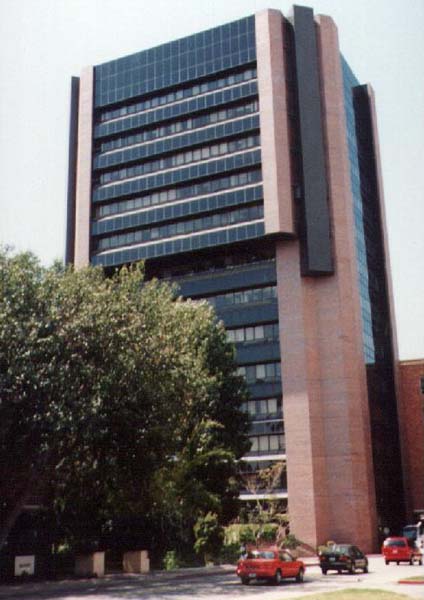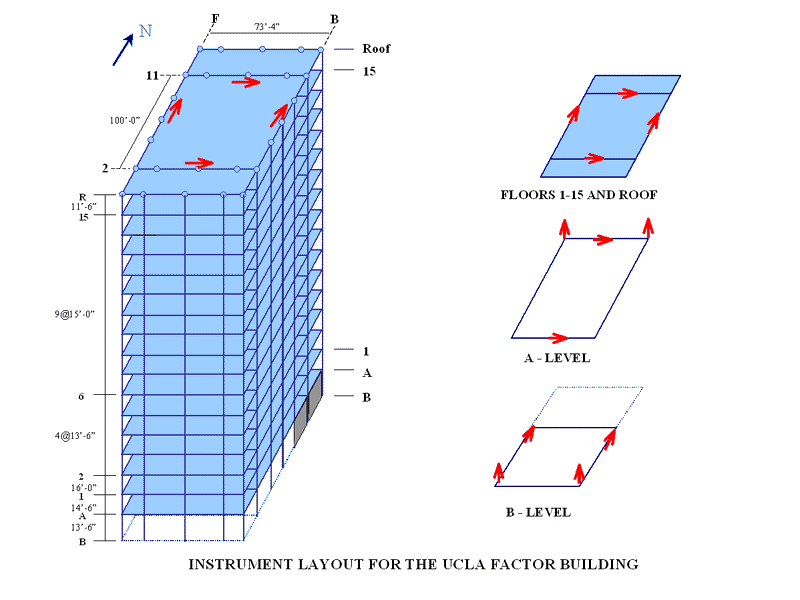To study the transmission and propagation of seismic waves in multi-story buildings, the U.S. Geological Survey in cooperation with the California Institute of Technology (Caltech) and the University of California at Los Angeles (UCLA) installed dense strong-motion arrays at the Millikan Library at Caltech and the Factor (Health Sciences) Building at UCLA.
Millikan Library at Caltech

The 9-story reinforced concrete frame/shear-wall Millikan Library has a total of 36 channels, three horizontals on each floor plus three verticals in the basement. The building also serves as a full-scale test structure for the development and testing of structural health and performance monitoring methodologies. There are currently two web-based monitoring systems installed in the buildin. The two web-based systems are the COMET system and the R-SHAPE system. The R-SHAPE system provides real-time access to the all 36 channels of data available in the building. The COMET system provides online modal identification and data warehousing using the 9th floor accelerations. Both systems are continually under development and are used for research as well as educational purposes.

Factor (Health Sciences) Building at UCLA

The 17-story, steel-frame Factor building has a Kinemetrics FBA-11 accelerometer network (72 channels total) composed of four horizontal channels per floor except for the basement and subbasement which have two vertical and two horizontal channels each. The horizontal sensors are oriented north-south and east-west along the mid-sections of most floors The force-balance accelerometer sensors have a natural frequency of 50 Hz, normal damping at 70% of critical, and a dynamic range of 135 dB from 0.01 to 50 Hz. The output range scale is ±4g. The digitizers, located in the building's top floor, consist of 9 Quanterra 4128s, each recording 8 channels of continuous data.
In July, 2005, a 100-m-deep borehole and an overhead surface seismometer were installed in the nearby Botanical Gardens ~25 m from the building. They consist of a 3-component shallow 1g Episensor at 100 meters depth (Kinemetrics SBEPI-110) and a 2g Episensor at the surface, both connected to a Quanterra 4128. The GPS antennae is on the roof of the building. The waveform data from the borehole seismometers are included in the array datasets being archived onsite and at the IRIS Data Management Center.

 Jump to Navigation
Jump to Navigation